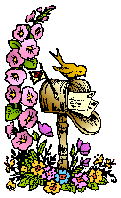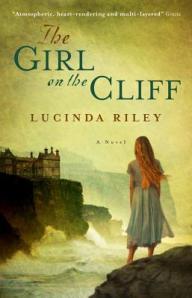
The meme allows bloggers to share what books they receive in the mail or through other means over the past week.
Just be warned that these posts can increase your TBR piles and wish lists.
Here’s what I received:

La Côte d’Azur, 1998: In the sun-dappled south of France, Emilie de la Martinières, the last of her gilded line, inherits her childhood home, a magnificent château and vineyard. With the property comes a mountain of debt—and almost as many questions . . .
Paris, 1944: A bright, young British office clerk, Constance Carruthers, is sent undercover to Paris to be part of Churchill’s Special Operations Executive during the climax of the Nazi occupation. Separated from her contacts in the Resistance, she soon stumbles into the heart of a prominent family who regularly entertain elite members of the German military even as they plot to liberate France. But in a city rife with collaborators and rebels, Constance’s most difficult decision may be determining whom to trust with her heart.
As Emilie discovers what really happened to her family during the war and finds a connection to Constance much closer than she suspects, the château itself may provide the clues that unlock the mysteries of her past, present, and future. Here is a dazzling novel of intrigue and passion from one of the world’s most beloved storytellers.
2. Rutherford Park by Elizabeth Cooke, which came unexpectedly from the publisher.
Snow had fallen in the night, and now the great house, standing at the head of the valley, seemed like a five-hundred-year old ship sailing in a white ocean…
For the Cavendish family, Rutherford Park is much more than a place to call home. It is a way of life marked by rigid rules and lavish rewards, governed by unspoken desires…
Lady of the house Octavia Cavendish lives like a bird in a gilded cage. With her family’s fortune, her husband, William, has made significant additions to the estate, but he too feels bound—by the obligations of his title as well as his vows. Their son, Harry, is expected to follow in his footsteps, but the boy has dreams of his own, like pursuing the new adventure of aerial flight. Meanwhile, below stairs, a housemaid named Emily holds a secret that could undo the Cavendish name.
On Christmas Eve 1913, Octavia catches a glimpse of her husband in an intimate moment with his beautiful and scandalous distant cousin. She then spies the housemaid Emily out in the snow, walking toward the river, about to make her own secret known to the world. As the clouds of war gather on the horizon, an epic tale of longing and betrayal is about to unfold at Rutherford Park…

Under the desert’s cracked and barren skin, spadefoot toads are waiting for rain. In the endless black of the deepest caves, blind fish find their way. Even in the frozen hearts of glaciers, ice worms by the billion flourish. In this fascinating look at fourteen animals who defy the odds by thriving in Earth’s most dangerous places, renowned poet Marilyn Singer and celebrated artist Ed Young show that of all the miracles of life, it is life’s persistence that astounds the most.
What did you receive?







